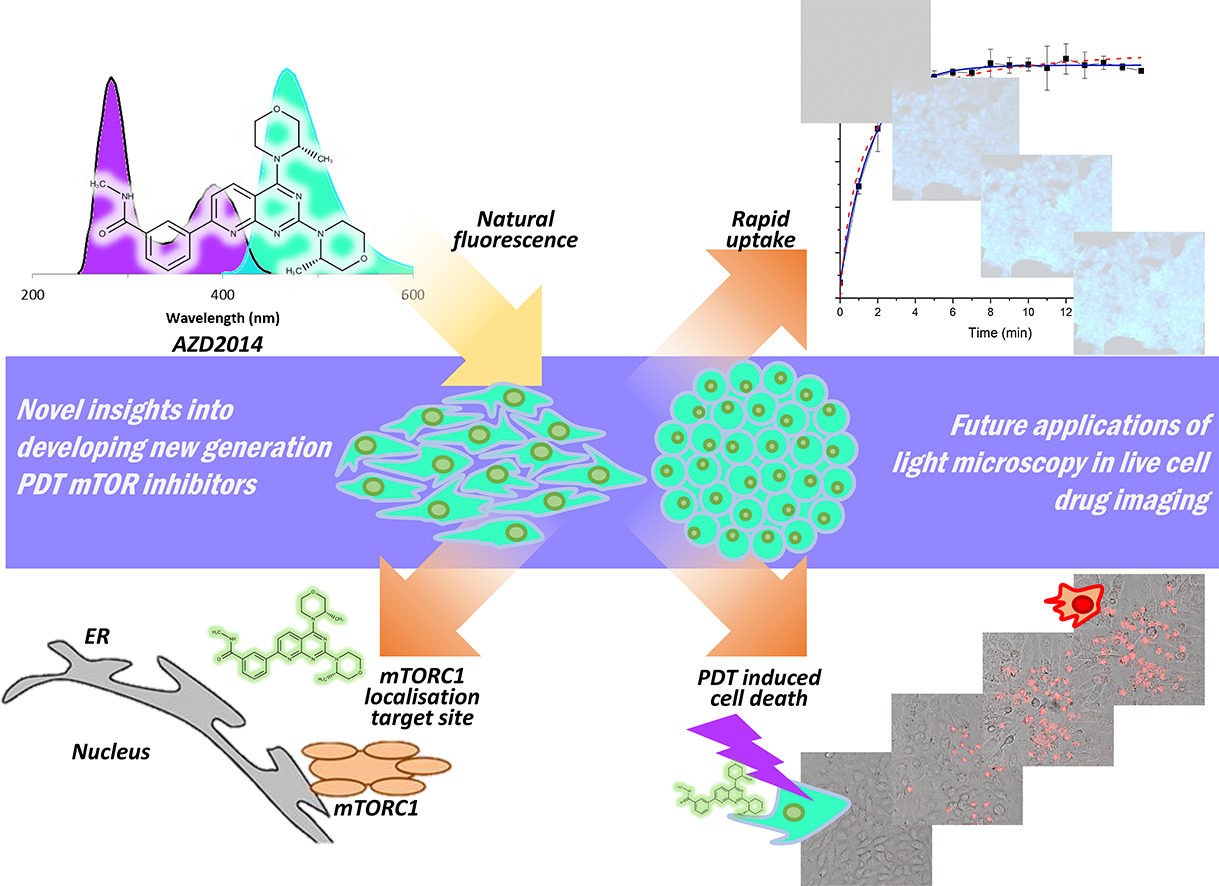 In a CLF led collaboration with Evotec and CRUK/MRC Oxford Institute for Radiation Oncology, a paper has recently been published in the Journal of Photochemistry and Photobiology B: Biology on the topic of using laser microscopy to evidence the effect of a potential new drug in combating diseases such as cancer.
In a CLF led collaboration with Evotec and CRUK/MRC Oxford Institute for Radiation Oncology, a paper has recently been published in the Journal of Photochemistry and Photobiology B: Biology on the topic of using laser microscopy to evidence the effect of a potential new drug in combating diseases such as cancer.
In this paper, the team showed that an inhibitor AZD2014 may have a new application that hasn't been previously reported. This drug targets the key signalling pathway of the mammalian target of rapamycin mTOR, a protein that is involved in many functions in the body, good and bad, such as protein synthesis, autophagy, metabolism, aging, movement and memory formation, cancer, and more recently Covid19.
The team, led by Professor Stan Botchway, demonstrated how the drug is highly effective at killing cancer and immortalised cells. This is heightened by a possible photodynamic therapy effect where AZD2014 becomes activated and phototoxic, thus capable of killing cells when it absorbs one photon at 400 nm or two photons at 600-800 nm.
Read more about this exciting work here.
Image Credit: Ahmed, Abdullah R., et al. "Directly imaging the localisation and photosensitization properties of the pan-mTOR inhibitor, AZD2014, in living cancer cells." Journal of Photochemistry and Photobiology B: Biology (2020): 112055.https://doi.org/10.1016/j.jphotobiol.2020.112055

